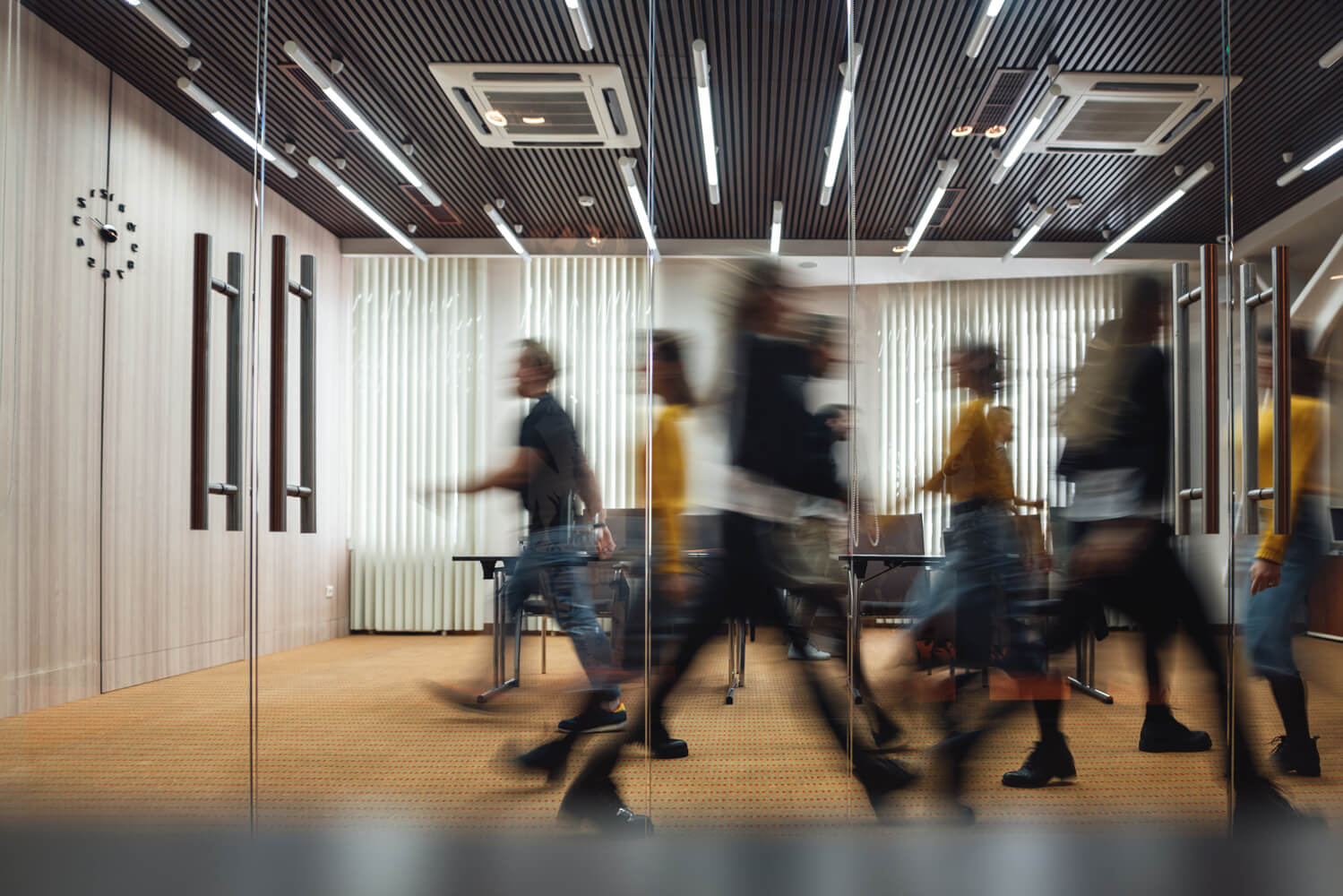How Research on Fresh Air is Changing the Building Industry


It’s no surprise that fresh air would improve the satisfaction and productivity of building occupants. However, supplying large doses of fresh air also costs money, because the air must be heated or cooled. Over the years this has resulted in design practices where air quality is designed to provide acceptable quality for odors, with little attention to other effects of stale air.
The American Society for Heating, Refrigeration and Air-conditioning Engineers (ASHRAE) literally wrote the book on air quality – it’s called Standard 62.1 Ventilation for Acceptable Indoor Air Quality. This standard guides designers in selecting ventilation rates based on number of occupants, types of tasks and the quality of the outside air. Because we all exhale carbon dioxide when we breathe, design standards are typically based on the concentration of CO2 in occupied rooms. This turns out to be a pretty good way to measure the quality of the air in general, especially when the ambient air quality outdoors is good. CO2 is a good indicator that enough fresh air is present to reduce odors (particularly body odor) below noticeable levels. However, it turns out that we process information better when CO2 levels are lower than those currently recommended by ASHRAE.
"The health benefits associated with enhanced ventilation rates far exceed the per-person energy costs relative to salary costs."
MacNaughton et al. 2015:14710
Evidence for the benefit of fresh air on cognition and health has long been mounting.
Here’s a quick timeline:
- Ventilation advocates started by looking at existing data and simply asking if the measured CO2 levels could explain differences. For example, an analysis by Milton et al. (2000) showed that workers with half as much outdoor air were 1.5 times as likely to take sick leave. This result was based on 3700 employees in 40 different buildings, all at the same company.
- Following these results, Schendell et al. (2004) similarly investigated the impact of ventilation rates on student absenteeism. They collected data on student attendance, gender, socioeconomic status, and ethnicity from 400 classrooms. Their statistical model predicted that every additional 100 ppm in CO2 was associated with a 1% increase in the absenteeism rate.
- Finally, researchers designed an experiment to test these suggestive findings. A paper authored by Wargocki & Wyon in 2007 showed that children completed schoolwork faster when ventilation was increased from 6 cubic feet per minute (cfm) to 18 cfm. The error rate did not change significantly in this cross-over study with two similar rooms in the same school.
So why all the CO2 hype now? Because a new study is circulating that is the best research to date on the impact of ventilation on cognitive performance. In a recent study published at the end of 2015, (Allen et al. 2015) researchers from the Harvard T.H. Chan School of Public Health used a different way of measuring performance: a simulated strategic management situation conducted by computer in a 90-minute session. The simulation used was a validated way of measuring cognitive function in nine domains, developed to evaluate the performance of managers in areas such as paying attention and gathering information to make decisions. Echoing previous work, but in much more dramatic fashion, the results demonstrated the benefit to building occupants of lower CO2 levels.

Twenty-six office workers participated in the study, which lasted two weeks. Their performance was 101% better on average under a higher ventilation rate (40 cfm/person – approximately 550 ppm CO2) compared to conventional building conditions (20 cfm/person – approximately 945 ppm CO2). Generalizing this finding to other contexts, MacNaughton et al. (20 15) found that $40 per year in ventilation is associated with $6,000 per year in cognitive outputs from employees. The quality of the study goes beyond previous work, creating waves in the design community. For a long time now designers have used around 17 cfm per occupant following the guidance of ASHRAE Standard 62.1.

Recognizing the significance of this research, BranchPattern has been strongly recommending ventilation rates be increased. One of the first projects we began formally doing this on as a direct result of this recent research was a new elementary school in the Boulder Valley School District in Boulder, CO. The school was targeting an EUI of 25 kBtu / square foot /year, so it was important to justify any small increase in energy consumption as a result of increased ventilation. The following is an overview of the process we employed to quantitatively estimate the cognitive impacts on students and teachers to justify the increased ventilation rates.
We recently evaluated different ventilation rates for the new Douglass Elementary school in the Boulder Valley School District, Boulder, CO. The school had an aggressive energy target, so it was important to justify the energy penalty associated with conditioning more outdoor air. Using Allen et al. 2015 and the BranchPattern Human Performance Tool, the team estimated that increasing outdoor air from 15 to 20 cfm per person would result in an average cognitive score increase of between 3% and 38% (average 19%).
Adding just 5 cfm of ventilation per person resulted in a 19% improvement in cognitive performance on average.
Cognitive Impact of Increased Ventilation at Douglass Elementary
Basically, at the higher ventilation rate and holding everything else equal, students are learning and teachers are teaching roughly 19% more effectively on average compared to the lower ventilation rate. In terms of dollars, it’s difficult to quantify this for students, who will use their education for a lifetime.
Something easier to evaluate is the cost / value proposition for employees. In the Denver area teachers’ average salary is $55,472. Considering the twenty teachers who will work in the school, the higher ventilation rate results in $214,334 of additional performance each year. And the cost of the additional equipment to provide energy-efficient ventilation? $20,020. Excluding the associated fractional annual increase in utility costs, that’s a 34-day simple payback.
Where are we headed with ventilation in buildings? Will ASHRAE be updating Standard 62.1 to acknowledge the spaces that would benefit for more outdoor air? It’s hard to predict the industry, but for now we recommend that building owners understand the costs and benefits of additional outdoor air. Increasing minimum outdoor air rates by 100% may be justifiable if occupants are doing important cognitive work. For the design community, until ASHRAE gets a new standard out of committee, you can reference the European standard for ventilation: CR 1752. This document recommends different levels of ventilation based on how spaces are used. Perhaps the biggest benefit of recent findings is that building owners, users, and designers are talking seriously about what’s the right amount of fresh air.
Sources:
Allen, J. G., P. MacNaughton, U. Satish, S. Santanam, J. Vallarino, and J. D. Spengler (2015) Associations of Cognitive Function Scores with Carbon Dioxide, Ventilation, and Volatile Organic Compound Exposures in Office Workers: A Controlled Exposure Study of Green and Conventional Office Environments. Environmental Health Perspective 124(6): 805-812. http://ehp.niehs.nih.gov/wp-content/uploads/124/6/ehp.1510037.alt.pdf.
Fisk, W.J., Black, D., & Brunner, G. (2011). Benefits and costs of improved IEQ in US offices. Indoor Air, 21(5), 357-367.
MacNaughton, P., J. Pegues, U. Satish, S. Santanam, J. Spengler and J. Allen (2015) Economic, Environmental and Health Implications of Enhanced Ventilation in Office Buildings. International Journal of Environmental Research and Public Health 12:14709-14722. www.mdpi.com/journal/ijerph.
Milton, D. K., Glencross, P. M., & Walters, M. D. (2000). Risk of sick leave associated with outdoor air supply rate, humidification, and occupant complaints. Indoor air, 10(4), 212-221.
Shendell, D. G., Prill, R., Fisk, W. J., Apte, M. G., Blake, D., & Faulkner, D. (2004). Associations between classroom CO2 concentrations and student attendance in Washington and Idaho. Indoor air, 14(5), 333-341.
Wargocki, P., & Wyon, D. P. (2007). The effects of outdoor air supply rate and supply air filter condition in classrooms on the performance of schoolwork by children (RP-1257). Hvac&R Research, 13(2), 165-191.





View More Resources
Benefit from our expertise



